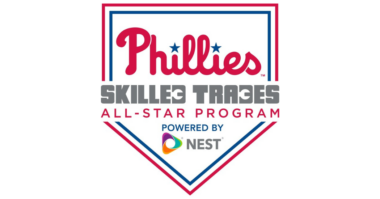The U.S. House of Representatives on November 5 passed the bipartisan Infrastructure Investment and Jobs Act by a vote of 228-206.
This $1 trillion infrastructure package provides funding for the nation’s infrastructure and includes almost $55 billion in water infrastructure, including $10 billion for per- and polyfluoroalkyl substances (PFAS) remediation efforts.
The bipartisan bill, which passed the U.S. Senate in August, is the largest injection of funds into the nation’s infrastructure in over two decades. The bill, which has long been championed by President Joe Biden, now heads to his desk for his signature.
The bill increases funding for the Clean Water State Revolving Fund, stormwater planning and development training, national lead pipe replacement, managed aquifer recharge projects, and public assistance to connect communities to publicly owned water systems.
The most significant industry-specific provisions in the bill include the following.
- Study on Stormwater Best Management Practices directs the U.S. Department of Transportation and the U.S. Environmental Protection Agency to enter into an agreement with the National Academy of Sciences to study pollutant loads from highways and pedestrian facilities and recommend potential stormwater management and total maximum daily load compliance strategies.
- Water Storage, Groundwater Storage and Conveyance Projects directs the Department of the Interior (DOI) to conduct feasibility studies for water storage, groundwater storage, and conveyance projects, and specifies a project approval process.
- Small Water Storage and Groundwater Storage Projects provides through the DOI a competitive grant program for Reclamation states, plus Alaska and Hawaii, for small water storage and groundwater storage projects.
- Competitive Grant Program for Large-Scale Water Recycling and Reuse Program provides through the DOI a competitive grant program for Reclamation states for large-scale water recycling and reuse projects based on feasibility studies and 25 percent federal cost share.
- Federal Assistance for Groundwater Recharge, Aquifer Storage, and Water Source Substitution Projects directs the DOI to offer technical and financial assistance and enter into agreements for groundwater recharge projects, aquifer storage and recovery projects, or water source substitution projects on a cost sharing basis.
- Assistance for Small and Disadvantaged Communities provides grants to states to assist in the purchase of point-of-entry or point-of-use filters and filtration systems, replacement of lead service lines and other sources of lead in drinking water, and the costs associated with connecting a household to a public water.
- Reducing Lead in Drinking Water provides through the EPA financial assistance to public water systems and nonprofit organizations to replace lead service lines with priority for disadvantaged communities, low-income homeowners, and property owners of housing for low-income renters.
- Highway Funding and Truck Driver Pilot Program provides more than $345 billion for highway funding and freight infrastructure and will establish a three-year, national pilot program based on the DRIVE-Safe Act, authorizing up to 3000 18-20-year-old truck drivers to undergo advanced safety training to participate in interstate commerce.
The $10 billion to help address PFAS contamination is split through three programs:
- $5 billion through the EPA’s Assistance to Small and Disadvantaged Communities Program and State Response to Contaminants program to address emerging contaminants
- $4 billion through the Drinking Water State Revolving Fund for emerging contaminants with a focus on PFAS
- $1 billion through the Clean Water State Revolving Fund to address emerging contaminants.
While NGWA has long supported many aspects of the infrastructure legislation, there is still significant concern of increased “mandatory hook-up” efforts tied to the funding of connecting small communities to public water systems.
NGWA sent letters to Congressional leaders in September urging them to maintain funding for Western Water Programs in the bill which aid drought-stricken states by funding managed aquifer recharge and water re-use programs. NGWA plans to closely monitor the implementation of the infrastructure bill to track any opportunities and challenges it may bring to its membership.
For questions, please contact NGWA Public Relations and Government Affairs Manager Ben Frech at bfrech@ngwa.org.





Comments